
José María Iglesias biography, government, contributions

Jose Maria Iglesias was a politician, journalist, lawyer and professor born in Mexico City in 1823. Of liberal ideology, he held the presidency of the country on an interim basis between October 1876 and January 1877, although his mandate was not officially recognized at the time.
Although he had previously held some political positions and had stood out for his opposition to the Santa Anna regime, Iglesias' career was closely linked to the figure of Benito Juárez. During the French intervention and the War of the Reform, this politician remained at the side of the liberal leader and was part of his various governments.
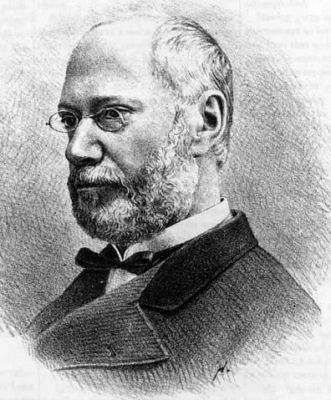
After the death of Benito Juárez in 1872, the presidency of Mexico fell to Sebastián Lerdo de Tejada. His attempt to continue in office in 1876 led José María Iglesias, then head of the Supreme Court, to proclaim himself provisional president based on two articles of the Constitution of 1857.
His brief stint in the presidency did not allow him to leave significant contributions. However, during previous liberal governments, Iglesias had named one of the Reform laws. Specifically, the Churches Law sought to regulate the enormous income that the Church obtained at that time..
Article index
- 1 Biography
- 1.1 Beginning of his political career
- 1.2 Journalist and writer
- 1.3 Reform Laws
- 1.4 War of the Reform and French invasion
- 1.5 End of the war and return to Mexico City
- 1.6 Death of Juárez and the government of Lerdo de Tejada
- 1.7 Presidency and Revolution of Tuxtepec
- 1.8 Defeat and exile
- 1.9 Death
- 2 Government of José María Iglesias
- 2.1 Promotion to the presidency
- 2.2 Acatlán Agreement and Salamanca Plan
- 2.3 Defeat
- 3 Contributions of José María Iglesias
- 3.1 The Churches Law
- 3.2 Other laws
- 3.3 Career as a writer
- 4 References
Biography
José María Iglesias Inzáurraga was born in Mexico City, on January 5, 1823, into a wealthy family. However, his father passed away when the future politician was only 12 years old and his mother only five years later. For this reason, he was in charge of his maternal uncle, Manuel Inzáurraga.
The young Iglesias studied at the Colegio de San Gregorio to study law. At the same time, he worked as a language teacher at the Colegio de San Ildefonso. In 1845, he received his law degree.
Start of his political career
Iglesias always had liberal ideas and opposed the conservative government of Antonio López de Santa Anna.
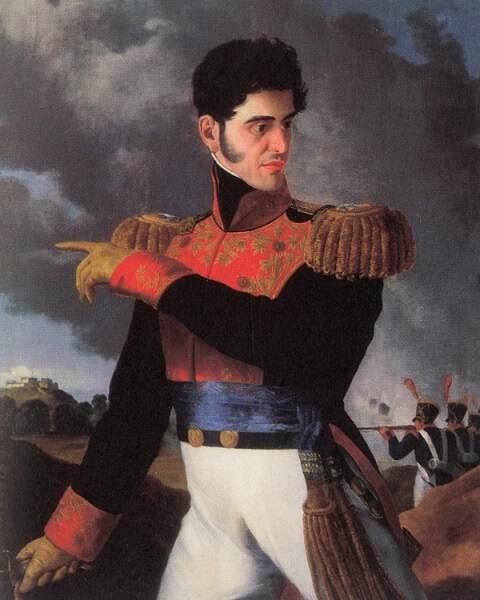
In 1846, he became alderman of Mexico City. The following year, during the US invasion, he moved to Querétaro, where President Pedro María Anaya appointed him legal minister of the War Court..
Also in these years, he served as private secretary to the Chief Executive and as Auditor of the Army of the East..
At the end of the war, the new president of the country, Mariano Arista, offered him an important position in the Treasury Department: an official of the Credit Board.
Journalist and writer
Apart from his work as a politician, Iglesias began in 1848 to collaborate with Guillermo Prieto and Manuel Payno in the development of the work Notes for the history between Mexico and the United States.
The politician was against the Treaty of Guadalupe Hidalgo and reflected his position from his position as editor-in-chief of the newspaper El Siglo Diez y Nueve and in his contributions to other publications such as the Republican Monitor, El Diario Oficial and La Chinaca.
In 1852, Iglesias was elected as a member of the Congress of Mexico. His eloquence and his good command of the language made him stand out from the rest of the deputies..
The return to power of Antonio López de Santa Anna, in 1853, represented the establishment of a dictatorial system. The dictator, very upset by the criticism of him that appeared in the Notes for the history of the war between Mexico and the United States, removed the perpetrators, including Iglesias.
Unable to exercise any public office, Iglesias devoted himself to his profession until Santa Anna was overthrown by the Ayutla Revolution in 1855.
Reform laws
With the fall of the government of His Serene Highness, a nickname that Santa Anna himself had imposed, Iglesias returned to occupy some important positions.
During the interim government of Juan N. Álvarez, he collaborated in the Ministry of Finance and, on June 25, 1856, the ministers Manuel Payno and Miguel Lerdo de Tejada asked him to carry out the implementation of the law on the confiscation of the ecclesiastical goods.
When Ignacio Comonfort, of liberal ideology, acceded to the presidency, Iglesias was appointed head of the Treasury Department and, later, Secretary of Justice.
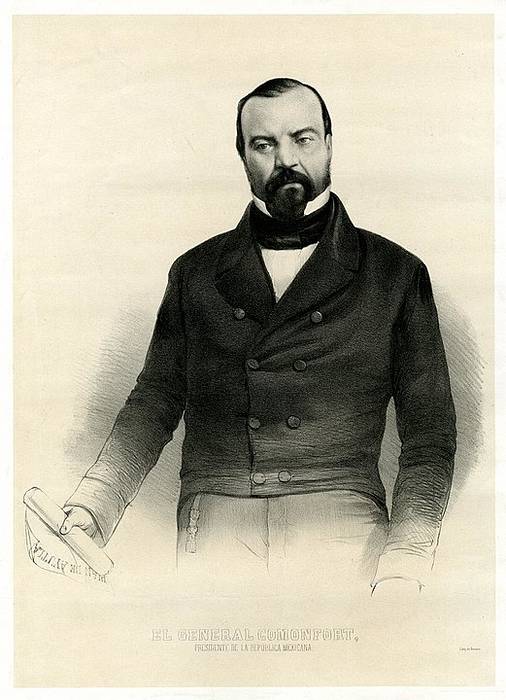
The reform laws that were being promulgated made Iglesias gain notoriety. The politician was commissioned to draft a law that would reduce the money that came into the Catholic Church, which went down in history as the Churches Law.
In addition, Iglesias promoted the approval of other laws, such as probate by will or procedures in the courts and tribunals of the District and federal territories..
His work earned him being appointed Minister of Finance in the last stage of Comonfort's presidential term..
War of the Reform and French invasion
The conservative reaction to the Reform Laws took shape in the Plan of Tacubaya, proclaimed by Félix María Zuloaga, and which was unaware of the Constitution of 1857.
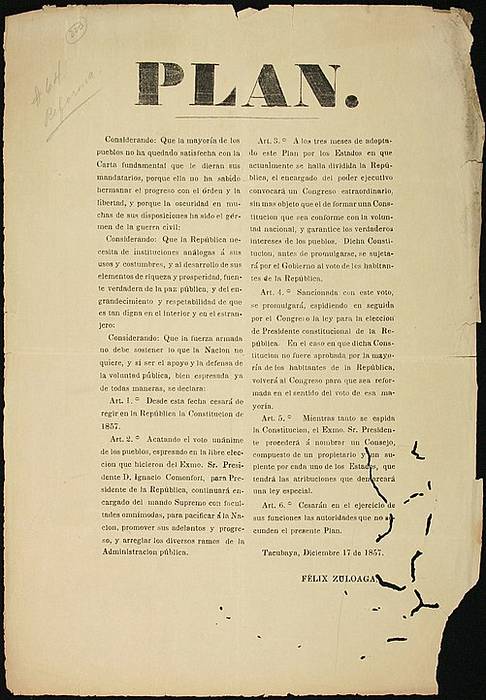
Comonfort adhered to the Plan at first, but it was Zuloaga who took over the presidency.
The 1857 Constitution established that the president of the Supreme Court of Justice should assume the provisional presidency in the event that it was left vacant for any reason. At that time, the post was in the hands of Benito Juárez, who did not hesitate to defend the validity of the constitutional text and proclaimed himself president.
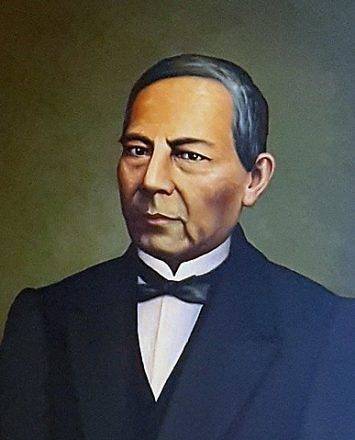
The confrontation between liberals and conservatives was called the War of the Reform. Iglesias, then a Supreme Court magistrate, supported Juárez and refused to recognize the conservative government.
In 1860, after three years of war, the Liberals regained the government, with Juárez as president. Iglesias was appointed, first, general administrator of income and, in January 1861, Senior Officer of the Ministry of Finance.
The Second French Intervention of Mexico forced the government of Juárez to leave the capital and form an itinerant executive of which Iglesias was part. Among other positions, he was a visitor to the Income Administration of the capital of the state of San Luis Potosí, Minister of Justice and Minister of Finance.
End of the war and return to Mexico City
After defeating the troops of the Second Mexican Empire, the Liberals restored the republic. Juárez, again in the presidency, ratified Iglesias as Minister of Finance in 1867.
That same year, Iglesias was elected as a member of Congress, as well as president of the chamber. In September 1868, in addition to continuing as a deputy, Iglesias was appointed Minister of the Interior and, at the beginning of 1869, Minister of Justice and Public Instruction.
His stage in the government continued until 1871, when Juárez was reelected. Iglesias, possibly due to health problems, preferred to return to private activity until 1873.
Death of Juárez and government of Lerdo de Tejada
The death of Benito Juárez, which occurred on July 18, 1872, forced a new presidential election to be held. The winner was Sebastián Lerdo de Tejada.
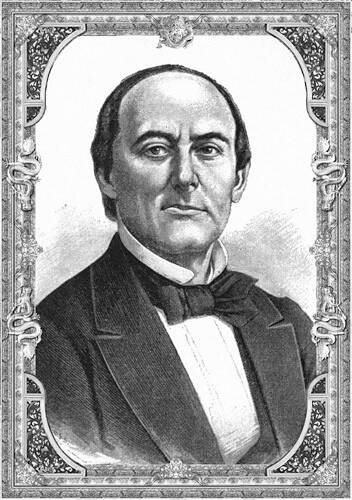
Iglesias returned to politics the following year, when he ran for president of the Supreme Court of Justice. In the voting he defeated his rivals, Vicente Riva and Porfirio Díaz and began a term during which he wrote the call Constitutional study on the powers of the Court of Justice.
The content of the text encountered very strong opposition from the government, which promulgated a law to reduce the powers of the Supreme Court, in May 1875. This new legislation was poorly received by Iglesias, since it granted Lerdo de Tejada a great interference in the Legislative power.
Presidency and Revolution of Tuxtepec
Sebastián Lerdo de Tejada decided to compete again in the presidential elections held in 1876. The announcement of his new candidacy caused Porfirio Díaz to proclaim his Plan of Tuxtepec and start an armed uprising to prevent Lerdo from becoming president again..
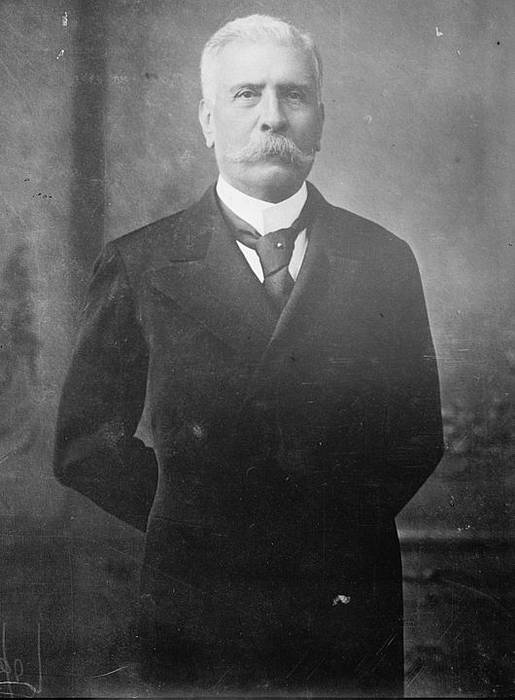
Although he was the winner in the elections, his opponents denounced that there had been a clear electoral fraud
Iglesias described the development of the elections as an "authentic coup" and ignored Lerdo de Tejada as president. Given this, he affirmed that according to the Constitution, the presidency should be assumed by the president of the Supreme Court, José María Iglesias himself..
Lerdo de Tejada reacted by arresting several followers of Iglesias. This, before the siege to which he was subjected, had to flee to Guanajuato.
Defeat and exile
Although he got the support of the governors of several states, Iglesias could not face the advance of Porfirio Díaz's troops.
Díaz defeated Lerdo's supporters in Puebla and later succeeded in taking the capital. At the same time, he persecuted the forces of Iglesias, who had to take refuge in Mazatlán. From there he went into exile in the United States.
During his exile, Iglesias resided in San Francisco and New Orleans. At the end of 1877, he decided to return to Mexico and even received some offers to join the Díaz government, although he preferred to reject them..
Death
Despite his defeat, Iglesias never stopped defending his liberal ideas and the Constitution of 1857, although he did not return to dedicate himself to politics..
His last years were spent in Mexico City, where he died on December 17, 1891. Only the most liberal newspapers reported his death, while the Díaz government tried to have his figure be forgotten..
Government of José María Iglesias
José María Iglesias was the interim president of Mexico for just a few months. According to the Center for Documentation, Information and Analysis of the Mexican government, his mandate lasted from October 26, 1876 to March 15, 1877.
Iglesias was called "legalistic president", since he proclaimed his right to occupy the presidency based on articles 79 and 82 of the Constitution of 1875.
Promotion to the Presidency
The 1876 elections, which represented the reelection of Lerdo de Tejada, received accusations of fraud by his opponents. Before that, in January of that same year, Porfirio Díaz had taken up arms against the government when Lerdo had announced his intention to re-present his candidacy..
José María Iglesias, president of the Supreme Court of Justice, denounced the electoral results and publicly ignored Lerdo de Tejada as elected president.
Iglesias' words were "Either I am the representative of legality, or I am not and I do not want to be anything." His position was very clear: as a representative of the country's highest court, he refused to recognize the re-election of Lerdo, nor to a government that emerged from the Plan of Tuxtepec proclaimed by Porfirio Díaz.
According to Iglesias' position, the 1857 Constitution empowered him to assume the presidency temporarily until new elections could be called. That, in addition to defeating the Diaz insurrection, was the only way to maintain constitutional order..
However, the repression unleashed by Lerdo de Tejada forced him to seek refuge in Guanajuato.
Acatlán Agreement and Salamanca Plan
From Salamanca, in Guanajuato, Iglesias described Lerdo de Tejada's position as "the greatest outrage to popular sovereignty".
Meanwhile, the advance of Porfirio Díaz's troops continued unstoppable. On November 16, 1876, his men defeated Lerdo de Tejada's army in Tecoac, Puebla, a battle that led to the fall of the government..
Iglesias had established his own government in Salamanca, where he had found the support of the Governor of Guanajuato, Florencia Antillón..
Porfirio Díaz had tried, without success, to get Iglesias to accept the so-called Acatlán Agreement, an agreement that included the seizure of power by force, ignoring the three branches of government..
Iglesias, after rejecting Díaz's proposal, drew up the Salamanca Plan, the objective of which was to form a provisional government and call new elections. The document also established that none of the participants in the contest could present themselves as a candidate, including himself..
Defeat
By the end of 1873, Iglesias had the support of the governors of Guanajuato, Querétaro, Colima, Guerrero, Zacatecas, San Luis Potosí, Jalisco, Sinaloa and Sonora..
When Díaz found out about these supporters, he left the government in the hands of General Juan N. Méndez and led an army with the intention of defeating Iglesias..
On January 25, 1877, Iglesias appointed a provisional government in Guadalajar and prepared to face Díaz.
However, Diaz's military superiority was overwhelming. Iglesias and his people were easily defeated in Los Adobes ("a mock battle," according to some historians) and retreated to Colima. Díaz's troops continued to press their positions until Iglesias had to leave for the United States..
Contributions of José María Iglesias
José María Iglesias participated in the approval of several liberal laws during his time in various governments.
The most important was the one that bears his name, the Churches Law, but it also had an important role in the creation of others that formed the so-called Reform Laws.
The Churches Law
The Iglesias Law, whose official name was the Parish Obligations Law, was promoted by the politician between January and May 1857, during the presidency of Ignacio Comonfort. When he began to prepare the law that bore his name, he held the position of Minister of Justice, Ecclesiastical Business and Public Instruction.
The regulations were part of the set of laws that attempted to reform the relationship between the Mexican state and the Catholic Church. In addition, they tried to reduce the power of some sectors until then privileged.
The objective of the law was to regulate the collection of parochial fees in order to prevent them from being too high for the poorest sectors of the population. Likewise, penalties were established for members of the clergy who did not obey it..
With the promulgation of this law, the services offered by the Church had to be free for a good part of the population. In this way, the clergy could not charge for marriages, baptisms and other ceremonies..
Other laws
In June 1856, as a member of the liberal government, Iglesias was commissioned by the Minister of Finance, Miguel Lerdo de Tejada, to seek the approval of the Law of Amortization of Ecclesiastical Assets of June 25, 1856.
In 1863, when he was part of the itinerant government of Juárez, he created the Administration of Nationalized Assets. Likewise, he was responsible for the Law that established the rules for the denunciation, adjudication, redemption or collection of Church property..
Writing career
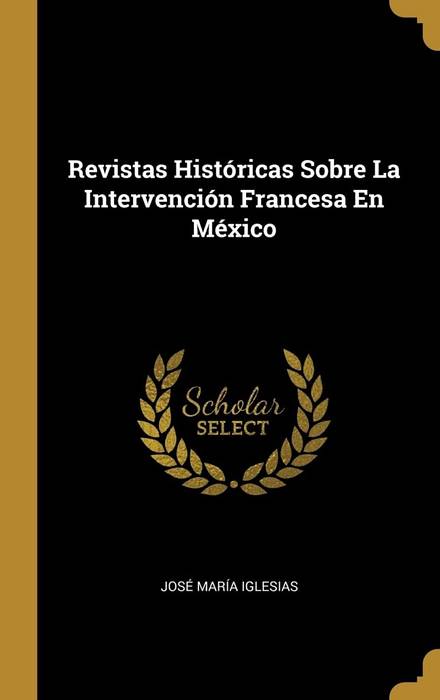
In addition to his role as a politician, Iglesias never stopped working as a journalist and writer. Among other jobs, he was editor-in-chief of several major publications, as well as the author of two highly regarded history books.
Iglesias was a co-author of Notes for the history of the war between Mexico and the United States, whose content cost him having to go into exile during the presidency of Santa Anna.
Later, between 1862 and 1866, he wrote Historical Magazines on the French Intervention, a work done after Manuel Doblado (Minister of Foreign Affairs) suggested that he discuss this topic.
José María Iglesias was also the author of The Presidential Question of 1876 and editor-in-chief of El Siglo Diez y Nueve, as well as a contributor to other newspapers.
References
- Díaz Flores, Gerardo. José María Iglesias. Obtained from relatosehistorias.mx
- WikiMexico. José María Iglesias. Retrieved from wikimexico.com
- Carmona Dávila, Doralicia. José María Iglesias publishes a Churches Manifesto in which he states that: "Díaz's military triumph will not constitute a political victory." Obtained from memoriapoliticademexico.org
- Encyclopedia of Latin American History and Culture. Iglesias, José María (1823-1891). Retrieved from encyclopedia.com
- Historical Wiki. Jose Maria Iglesias. Retrieved from historica.fandom.com
- The Editors of Encyclopaedia Britannica. Reform. Retrieved from britannica.com
- Encyclopedia of Latin American History and Culture. Churches Law. Retrieved from encyclopedia.com



Yet No Comments